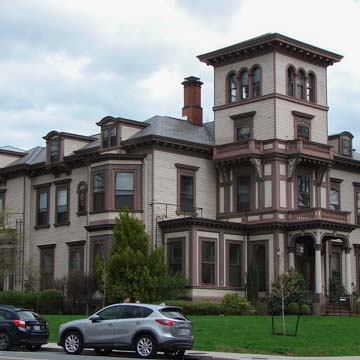On Stimson Avenue are about two dozen houses, most of them stylish, architect-designed dwellings from the late nineteenth century for the well-to-do to affluent. There is no better place to observe the transformation of Queen Anne into early Colonial Revival, with a few baronial ventures along the way. The clientele in
First, the grandfather of the street. When Amos Beckwith (son of Truman Beckwith and, like his father, a cotton broker) built his house, this sparsely settled part of town was an ideal setting for a picturesque, towered, Italianate villa. Though impressive, the Beckwith House appears somewhat clumsy and underembellished, in part because of the rather plain enlargement and the infill of its porch. The irregular profile notwithstanding, the house follows a cross-axial center-hall plan much like those of Alpheus Morse's palazzos. In 1882, Beckwith subdivided his family's holdings in the area to make half the building lots on Stimson Avenue. John J. Stimson owned the rest of the land, from which the other half of the building lots on the street were subdivided.






